The general trend globally with electrical power use is efficiency enhancement. If you run your home using solar panels, you need to consider efficiency as the highest priority because the power is inconsistent. The panel output fluctuates during different times of the day, and solar batteries can run out at night. So solar panel appliances need to be as efficient as possible. We will look at the various solar panel appliances and how to power them using solar energy. Take a look!
Solar Panel Appliances: Can You Power Appliances With Solar Directly?
Household appliances run on alternating current (AC), the same one we get from the grid. Solar panels generate direct current (DC), and solar batteries store and produce DC. So you cannot run household appliances directly using solar.
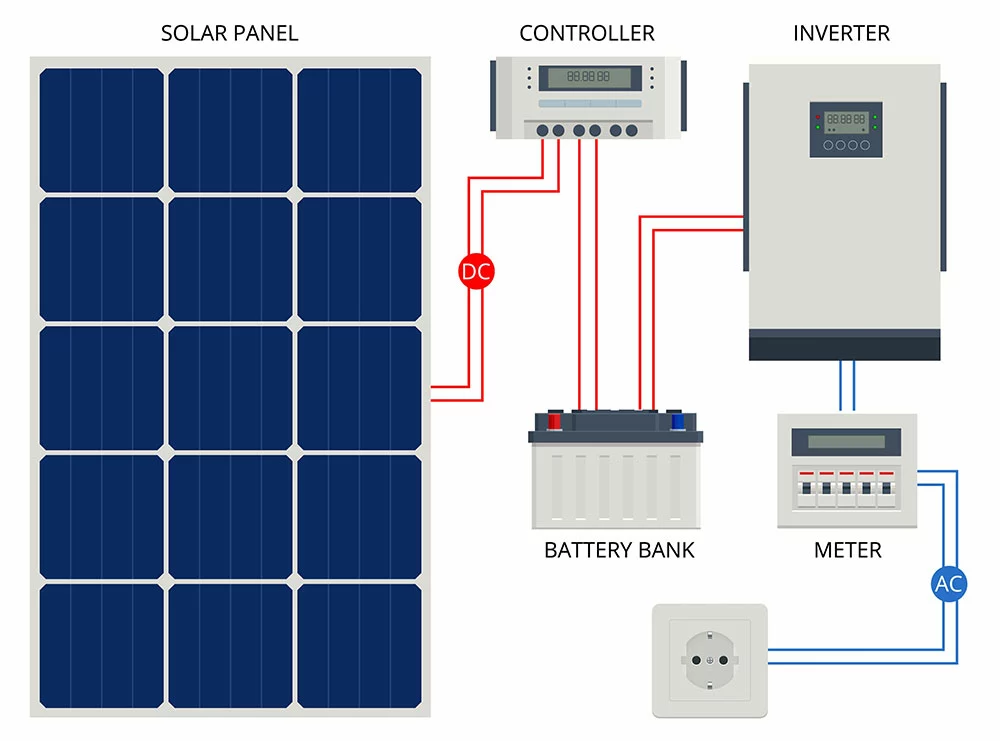
A solar panel system
Most solar wiring architectures consist of solar panels directly connected to charge controllers (MPPT or PWM). These modules regulate battery charging and discharging. So they are the center point between solar batteries, solar panels, and inverters. The inverter is responsible for converting 12V DC to AC power (110V, 120V, or 220V) to handle the appliance’s AC load.
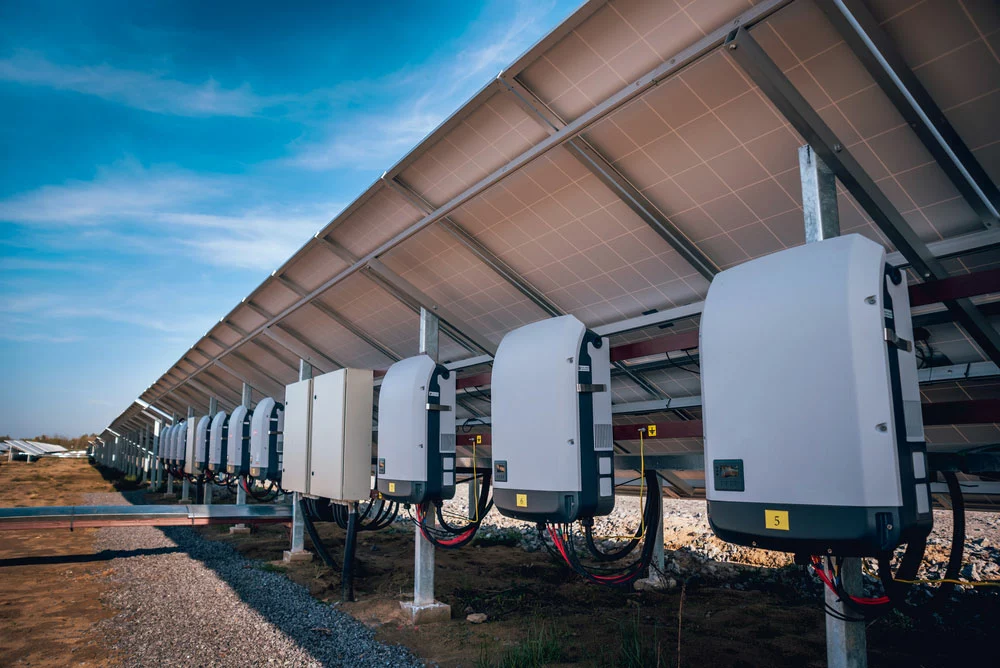
Large inverters installed under solar panels in a solar farm
Houses can also have DC loads that connect directly to the solar battery or charge controller. These usually include LED lights or strips.
Solar Panel Appliances: Typical Appliances with AC Loads in Households
Any device plugged into the wiring system that draws power from the solar battery bank is a solar-powered appliance. The typical ones include the following.
Refrigerators
Fridges are arguably the highest energy guzzlers in any household because they run 24/7. Averagely, refrigerators consume about 57kWh and freezers roughly 58kWh monthly (115kWh total). The average solar panel generates about 30kWh monthly, so you need about four of these to run the refrigerator.
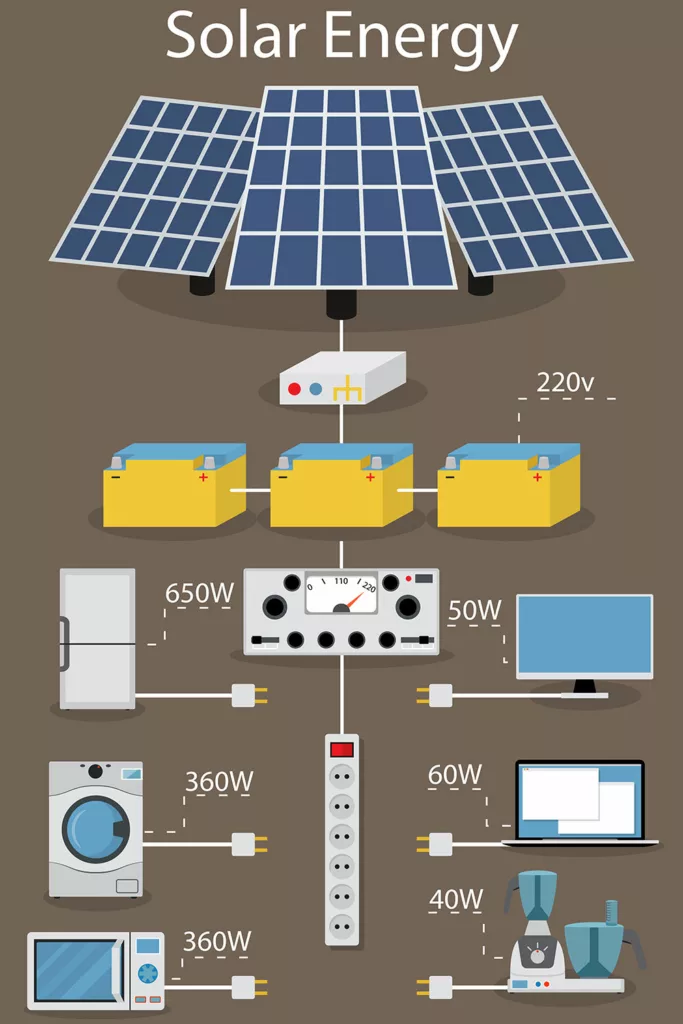
An infographic showing solar panel appliances
Television
Adults in the US spend about five hours each day watching TV. Of course, this number varies depending on the person. So you can multiply your TV’s wattage and the hours you watch each day to get the power consumption in watt-hours or kWh.
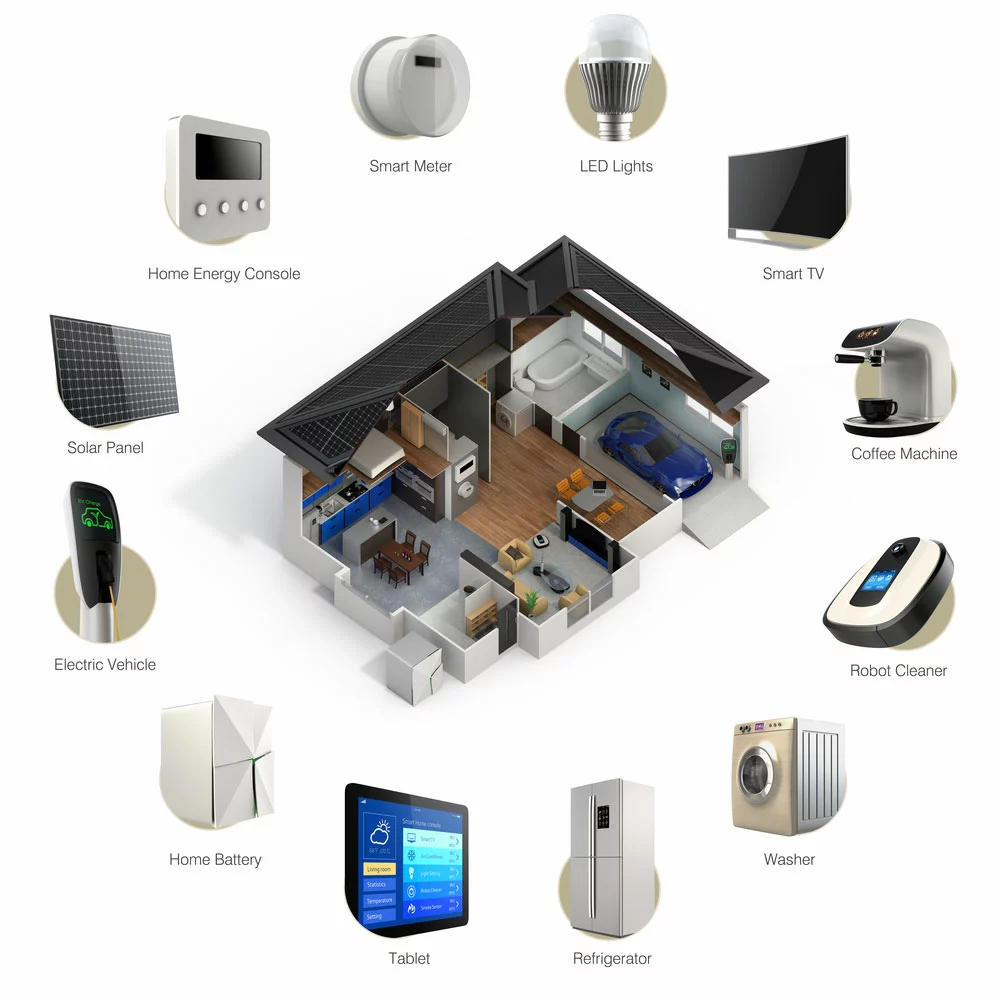
Solar panel appliances
Using a 60-inch TV with a power consumption of 29kWh monthly as an example, you’ll need one solar panel to run it. But TVs don’t come alone. You will need a cable box, WiFi router, and other devices to complete the entertainment and connectivity set. The total consumption from these devices can amount to about 55kWh. So you will need at least two solar panels.
Washer and Dryer
Washers and dryers consume roughly 60-65kWh, meaning you need three solar panels to run them.
Microwave
The power rating in microwaves is an average of about 900 watts. Estimating its consumption is not straightforward because its usage varies greatly depending on the home.
Air Conditioning
An average AC consumes about 1,000 watts, and you will use it for more hours during summer. You can do the math and determine the number of required panels.
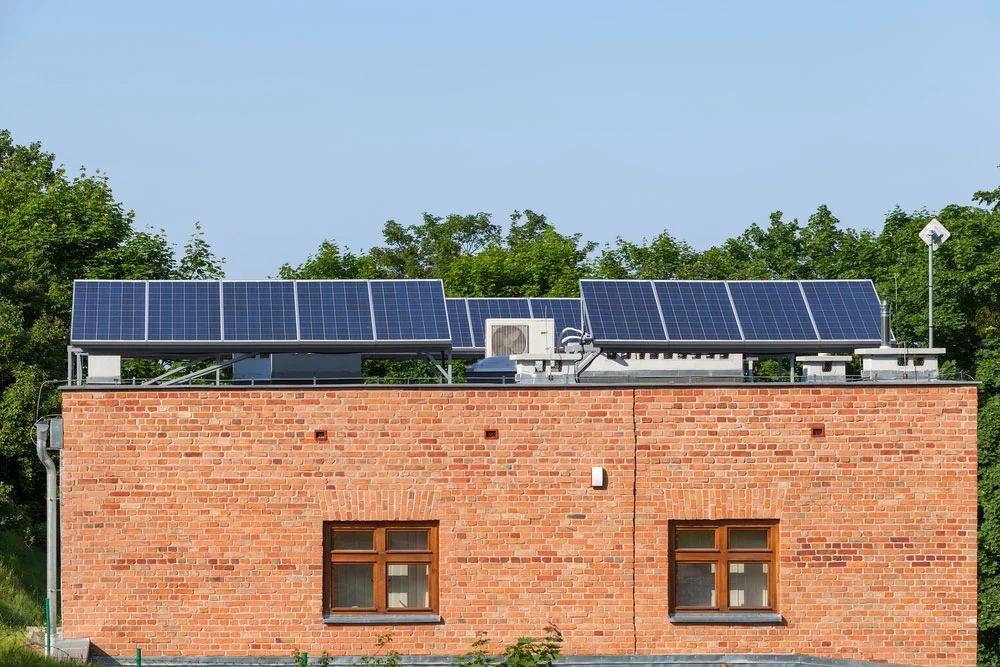
Solar panels and AC units on a rooftop
Electric Stove
We don’t recommend running electric stoves on solar power because they are power-hungry appliances with an average power rating of about 2,500 watts. But if you have enough money to invest in multiple panels, battery banks, and a powerful inverter, why not?
LED Lights
DC led lights that draw power directly from the solar battery or panel are more energy efficient than their AC counterparts. However, these can only work for off-grid systems. With grid-connected solar power systems, you should install AC lights to make switching from solar to grid power seamless.
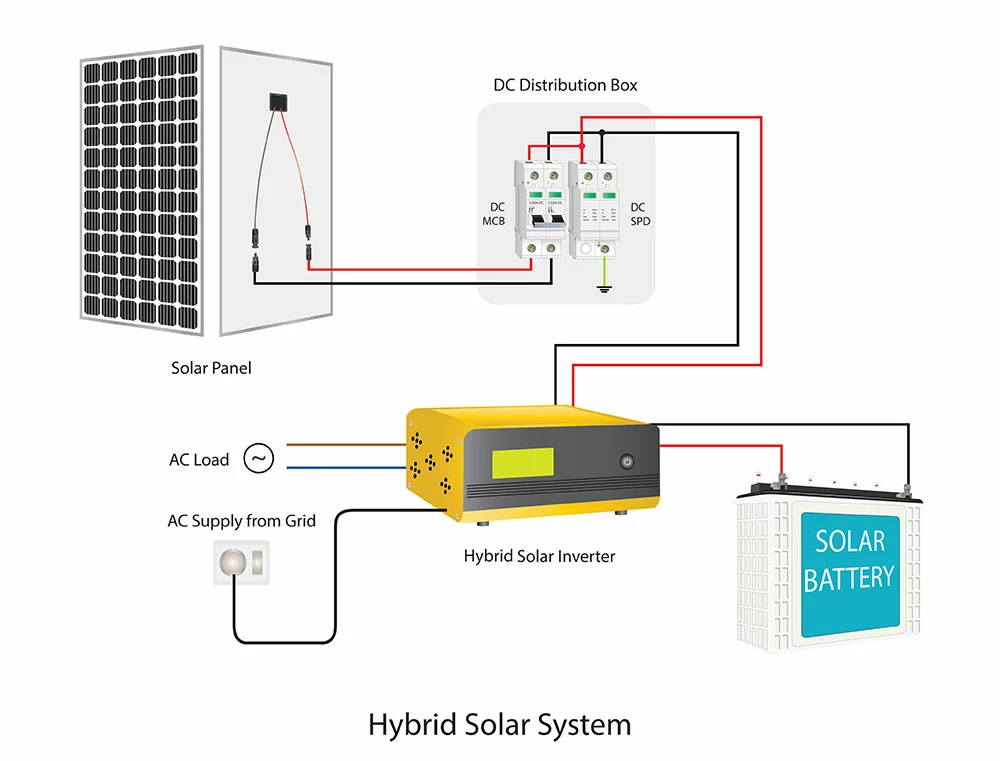
A hybrid solar system
Here is the typical appliance power table to summarize the average device power consumption.
| Electrical Appliances | Essential Load Wattage | Hours | kWh |
| Refrigerator | 700W | 10 | 7kWh |
| Television | 77W | 2 | 0.15kWh |
| Microwave | 900W | 0.2 | 0.23kWh |
| Electric Stove | 2,500W | 0.5 | 1.25kWh |
| Phone Charger | 20W | 4 | 0.8kWh |
| Laptop Charger | 61W | 2 | 0.12kWh |
| WiFi Router | 5W | 24 | 0.12kWh |
| Lights (40 10-watt LED bulbs) | 400W | 5 | 2kWh |
| Air Conditioner | 1,000W | 2 | 2kWh |
| Total | 5,663W | 13.67kWh |
Using this example, if you want to run all these devices simultaneously, you should have solar batteries with 5,663W (5.66kW) minimum power output. And the battery size should be at least 14kWh to run all the appliances for slightly over an hour, provided the solar inverter can handle such power.
Also, you’ll need a similar-sized solar panel installation to generate enough energy to charge the batteries and match the household consumption.
Although expensive, deep-cycle batteries are better for solar systems because they can handle regular charging/discharging cycles.
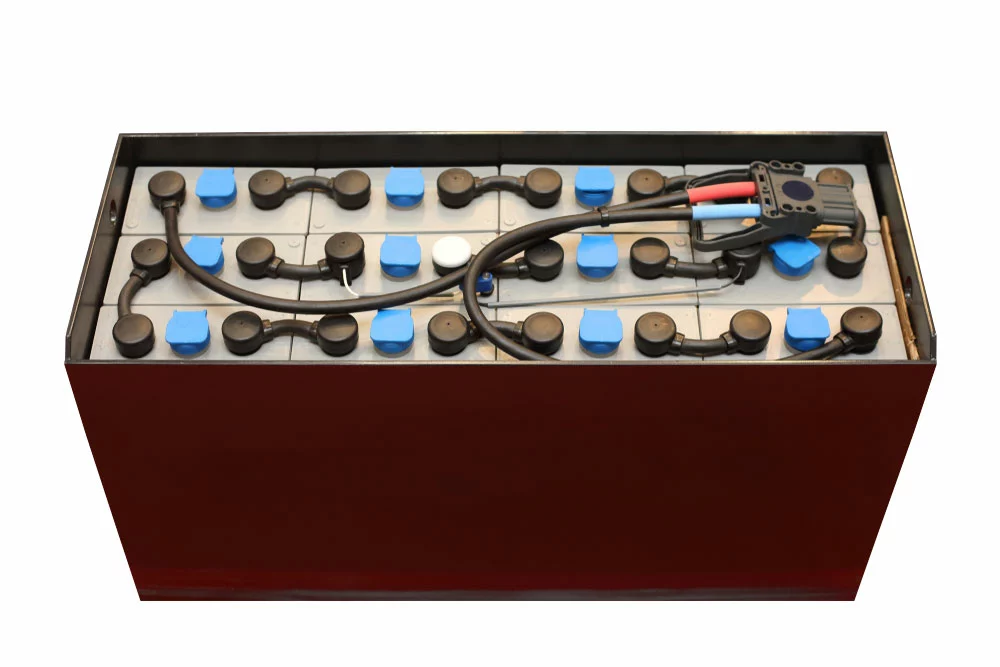
A deep-cycle battery
Why Do Appliances Run On AC Power Instead of DC?
Direct Current (DC) is unidirectional, while Alternating Current (AC) reverses direction at a specific frequency, usually 50Hz or 60Hz. Most devices run on AC because it is flexible, and you can use a transformer to step it up or down. Even gadgets that require DC, such as phones and laptops, have AC power to DC converters (adapters) externally. Other larger appliances usually have internal AC to DC adapters because their components can only run using direct current.
Parallel vs. Series Battery and Solar Panel Connection
In solar panel systems, the current is more important than the voltage. Therefore, you need to ensure the panels generate as much current as possible and the batteries store as many amperes as possible. Most solar batteries are 12V systems, and the inverter ramps the voltage up to 110V, 120V, or 220V when converting the power to AC. So the DC voltage should remain low at around 12V.
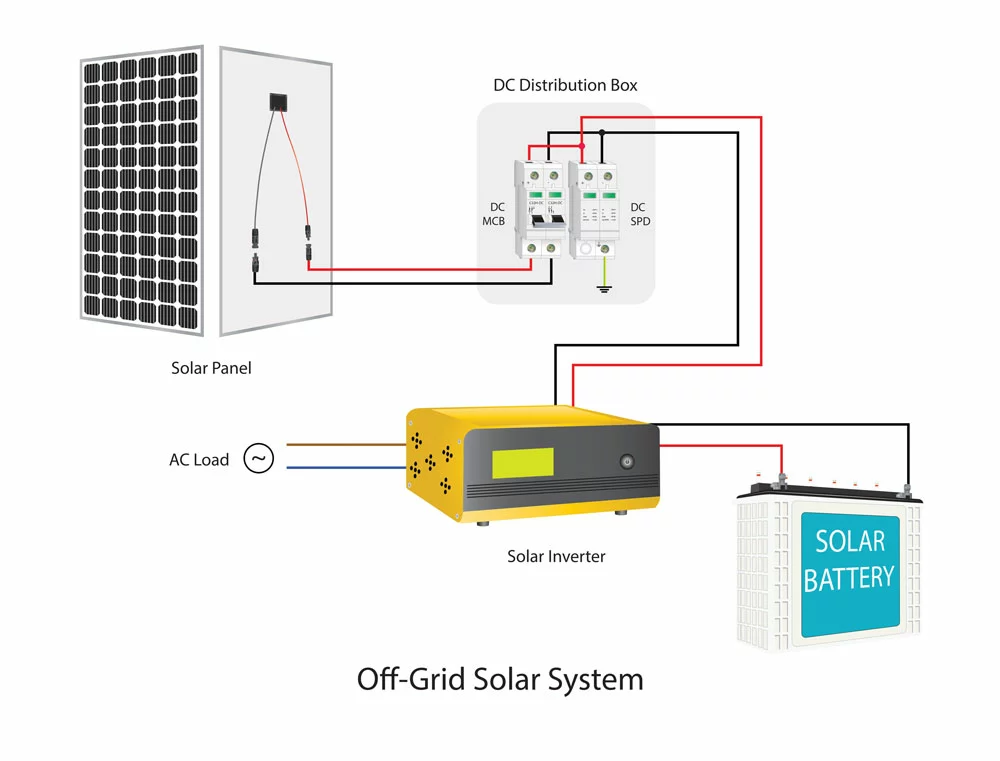
An off-grid solar system
With that in mind, there are two ways to connect the panels and batteries. The first is in series, where the positive terminal connects to the negative across the array. This connection increases the voltage, which is not desirable.

Solar panels connected in series and parallel
Secondly, you can connect the panels in parallel to increase their amperage (current) output while maintaining the voltage at the same level. Also, joining the batteries in parallel keeps the voltage constant but ramps up their current (amp-hour) carrying capacity.
Although this increased capacity makes the batteries take longer to charge than those connected in series, it increases the duration they can power your appliances.
Solar Panel Appliances: Tips To Minimize Inefficiencies
Another crucial factor to consider is to minimize inefficiencies as much as possible. Ensure you install solar panels with similar power and voltage ratings to avoid power losses. Mixing batteries with different voltages and amp-hour capacities also creates inefficiencies. Avoid doing that.
Manufacturers might use varying chemical properties for each battery. So as you expand the battery bank, get batteries from the same manufacturer and with the same model numbers.
Wrap Up
To conclude, solar panel appliances are just the regular 120VAC household appliances. You can power as many devices as you have at home using solar, provided you have sufficient panels & batteries and a powerful inverter. That’s all for this article. Thanks for your time.
